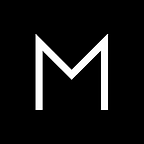What Is Lidar And Why Is It On The iPhone 12?
The iPhone 12 Pro camera’s specs have been revealed and now many are wondering what a lidar scanner is and why you need one on your phone. Let us explain.
What is Lidar?
Lidar, which stands for Light Detection and Ranging, uses light in the form of a pulsed laser to measure distance and depth. These laser beams are shot out of a lidar scanner and it times how long they take — at nano-second speeds — to bounce back. The pulses create an image with more accuracy than a simple camera ever could.
Where did it all start?
The concept behind lidar has been around since the 1960s. Lidar has been used in aircraft, space, and military applications for years. More recently the tech has been used in self-driving cars and even robot vacuums to help them navigate safely.
Is it like Time-of-flight?
Some camera systems have a Time-of-Flight (ToF) sensor to assist with depth information. However, the latest Lidar systems use multiple laser pulses to scan parts of an environment more quickly and more effectively than the single beam of infrared light ToF sensors use. This means lidar is better at detecting an object in front or behind other objects and therefore can provide a richer picture of the environment being scanned. The greater scanning potential means virtual objects are more realistically superimposed over a real environment. This is great news for augmented reality.
What about Face ID on the iPhone, is it like that?
Similar, but lidar has a longer range. Apple’s Face ID-enabling TrueDepth camera shoots out an array of infrared lasers, but it only works up to a few feet away. The lidar sensors on the iPad Pro and iPhone 12 Pro can work at a range of up to five meters.
What will lidar let us do on a phone?
Lidar allows the iPhone 12 Pro to boot AR apps a lot faster and quickly build a map of a room to add more detail. It also enables AR experiences to hide virtual objects behind real ones (occlusion) and place virtual objects on furniture around your home, making a more immersive and realistic experience. The laser will also work night or day, inside or out.
However, without a good library of AR apps, the tech could be wasted. There are already some interesting apps out there — see below — but over time, we will hopefully see a whole new range of creative apps and services that use the scanner to its fullest potential.
What apps use lidar?
The Apple app ‘Measure’ is a great place to test lidar on your new iPhone 12 Pro. If you need to measure a room or someone’s height, the lidar scanner makes these measurements more accurate than ever before. Horizontal and vertical guidelines appear when measuring large objects for easier and more accurate measurements, and you can instantly measure a person’s height from the floor to the top of their head.
IKEA’s ‘Place’ app lets you virtually place true-to-scale 3D models in your very own space, so you can try that new chair in your living room before you purchase it.
Room Scan LiDAR is a user experience created from scratch just for the iPhone 12 Pro and new iPad Pro and allows you to make precise floor plans and see your whole home as a scale model on your desk, or walk through it in AR.
What’s the bigger picture?
This next version of the internet — you may have heard it also called Magicverse (Magic Leap), Cyberverse (Huawei), or Planet-scale AR (Niantic) — is characterised by a persistent shared virtual space providing an experience that spans and operates across platforms and the real world. When we have an always-on virtual environment that can seamlessly layer into our real world with millions interacting with it at the same time, that’s when we’ll have a Metaverse.
Lidar being available on the latest iPhone brings us closer to making the metaverse a reality. The metaverse will rely on having accurate 3D scans of the entire world to layer virtual objects onto, but to have a digital copy of the entire world is an enormous task. Putting lidar scanners into the hands of consumers means 3D scans can be crowdsourced and pulled together faster and provide on the fly data.
XRLO: eXtended Reality Lowdown is brought to you by REWIND, an immersive design and innovation company. If you want to talk tech, ideas, and the future, get in touch here.
Your claps and follows help us understand what our readers like. If you liked our articles, show them some love! ❤️
We’d also love to hear from you. If you’re passionate about all things XR, you can apply to contribute to XRLO here. ✍️
